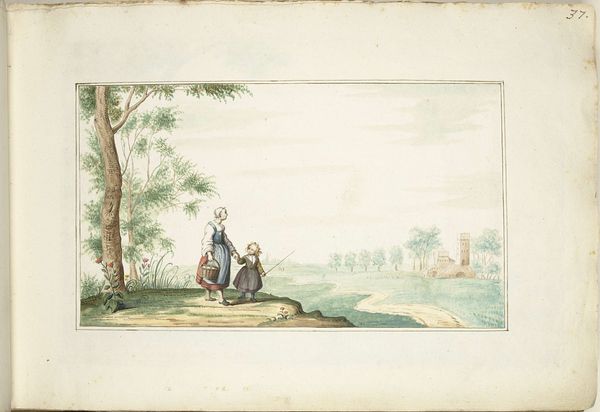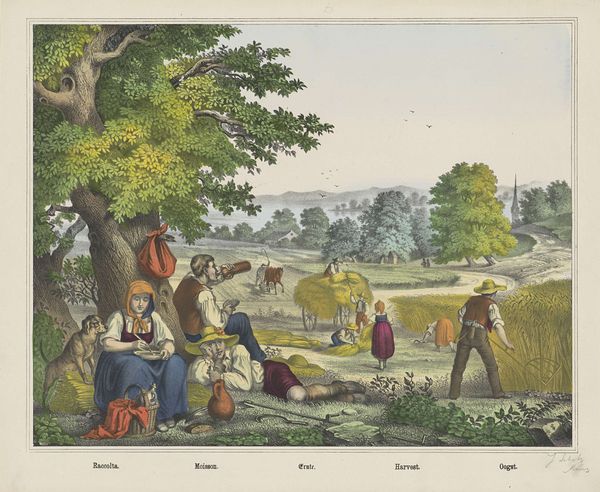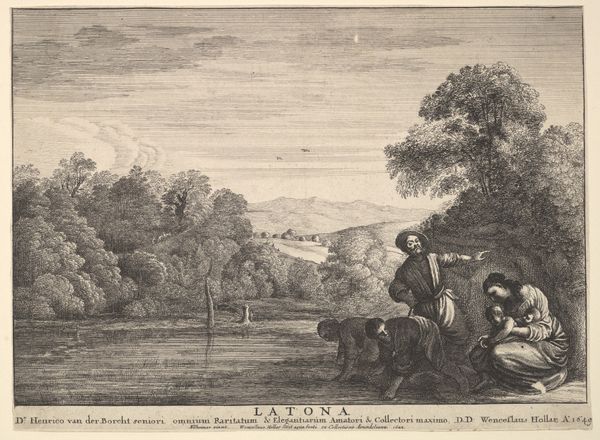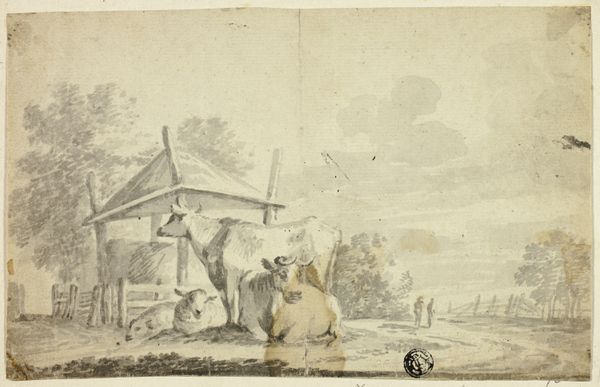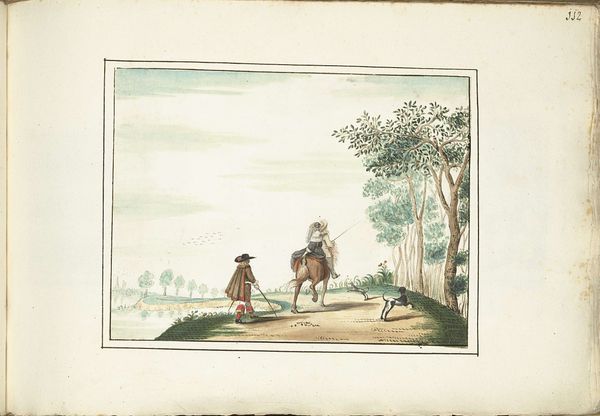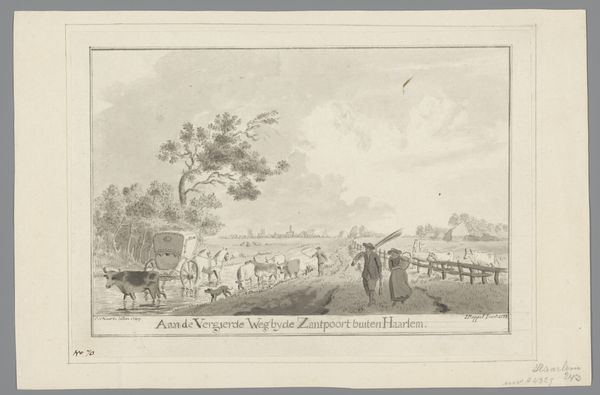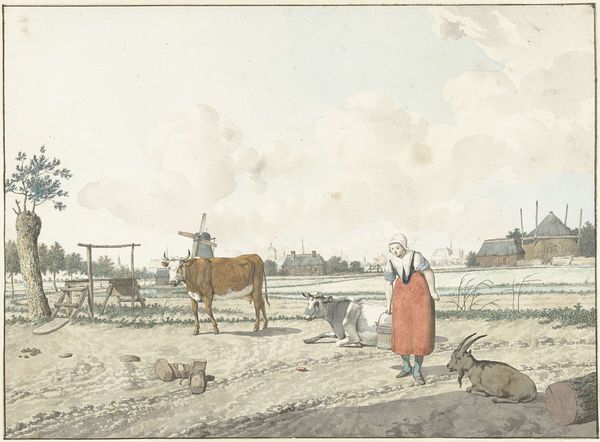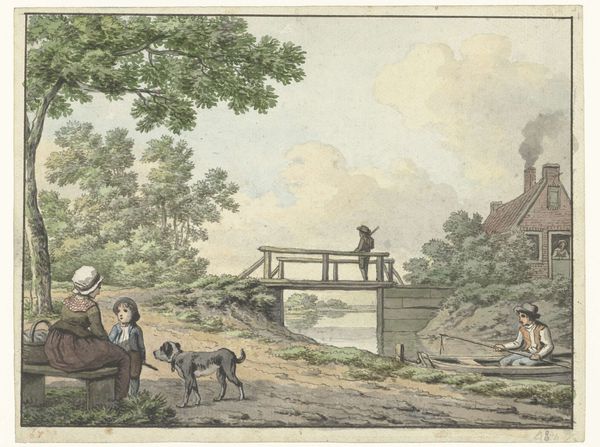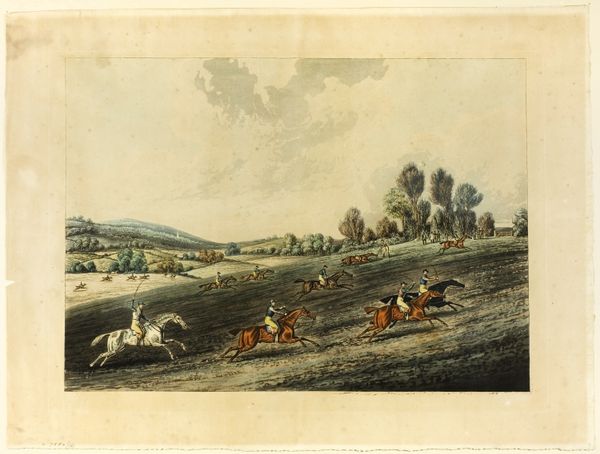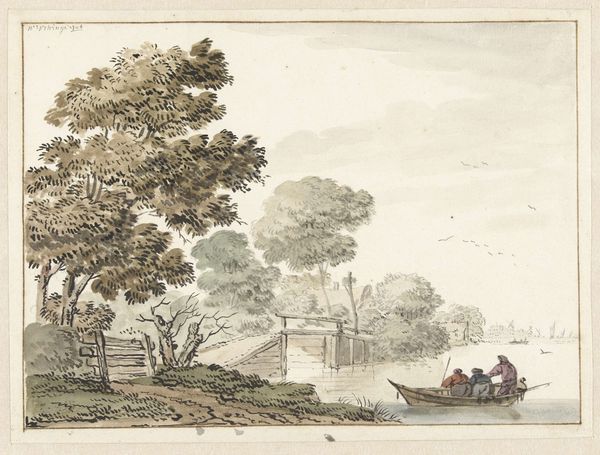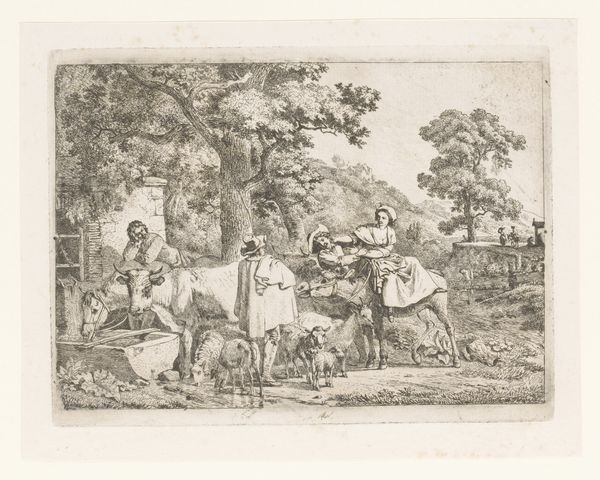
drawing, watercolor
#
drawing
#
narrative-art
#
baroque
#
dutch-golden-age
#
landscape
#
figuration
#
watercolor
#
coloured pencil
#
watercolour illustration
#
genre-painting
#
watercolor
Dimensions: height 313 mm, width 204 mm
Copyright: Rijks Museum: Open Domain
Gesina ter Borch made this watercolor drawing of two cowherds at sunrise or sunset in the Netherlands, sometime in the mid-17th century. We can see a rural scene, with cattle in the foreground and shepherds resting beneath a tree to the right. The scene evokes a sense of calm and harmony between humans and nature. But there’s something deceptive about the apparent simplicity of this idyll. Ter Borch was a woman artist in a male-dominated art world. Seventeenth-century Dutch art was thriving, fuelled by a booming economy and a growing middle class eager to display its wealth and status. Ter Borch, though, came from an artistic family and never married. She, therefore, occupied a somewhat unique position for a woman at this time. We might interpret this work as a subtle commentary on the social structures of her time. Perhaps it’s a celebration of a simpler, more egalitarian way of life. To fully understand art like this, we need to look at the social and economic history of the Netherlands. Contemporary documents and studies of artists’ lives can offer insights into the world in which art is made. Ultimately, art is a product of its time.
Comments
No comments
Be the first to comment and join the conversation on the ultimate creative platform.

